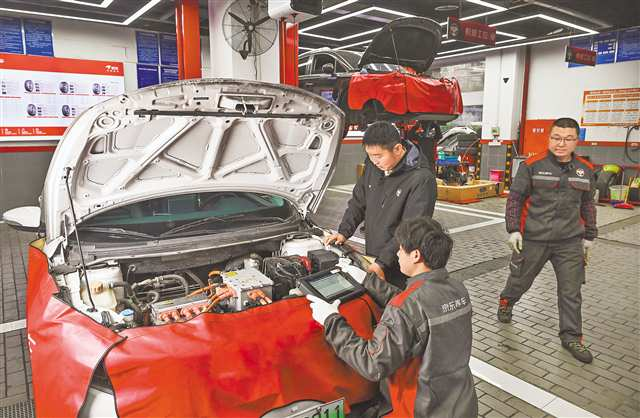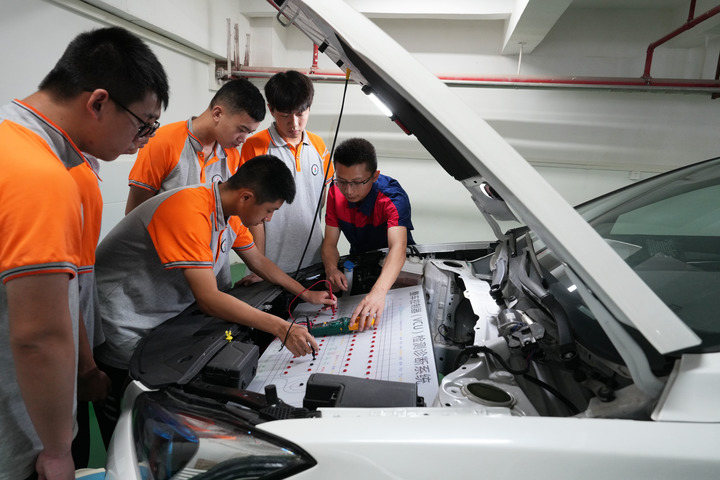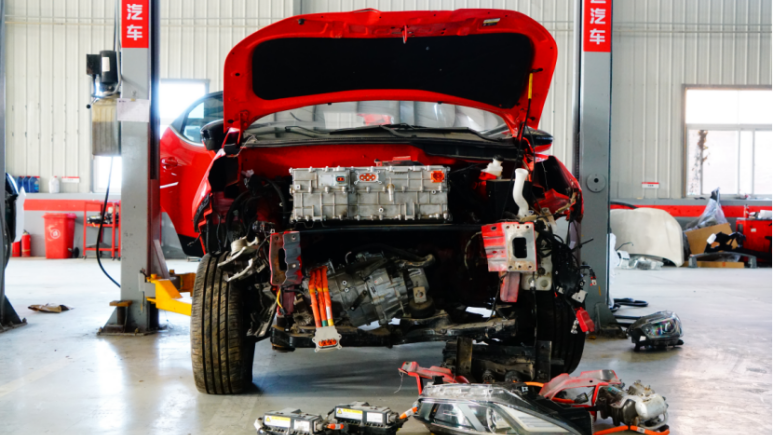Independent EV mechanics sued by automakers in China over repairs
Electric vehicle (EV) repair is increasingly being described as a “high-risk profession” in China in 2025, a stark contrast to early promises of lower maintenance costs compared to traditional internal combustion engine (ICE) vehicles. A series of lawsuits against independent mechanics, restrictive repair practices and limited access to technical information highlight significant challenges in the burgeoning EV aftermarket.
The core issues revolve around unclear “right to repair” for EV owners and mechanics, difficulties accessing necessary technical data and parts, and a repair ecosystem heavily controlled by automakers.
Mechanics face legal battles for independent repairs
Several cases have emerged in which EV manufacturers have sued independent mechanics for performing repairs or sharing repair processes online. A notable example involves a mechanic and vlogger known as “Brother Long,” facing lawsuits from three different EV companies for repairing their vehicles and posting videos about them.
Even more concerning is the case of two mechanics in Shanghai, “Big Liu” and “Little Liu,” who were sentenced to six months in prison (with probation) in 2024 for “damaging a computer information system.” Their offence? Unlocking two locked EV battery packs. According to reports, they used diagnostic tools to copy data from a functional battery pack to an owner’s locked one to enable it to discharge power. This action was deemed to potentially compromise the authenticity of vehicle data uploaded to monitoring platforms, which is required by regulations.

Automakers like Nio have stated that their actions are primarily for user safety, arguing that authorised service centres offer better technical assurance. Some industry professionals agree, pointing out risks associated with privately unlocked battery packs entering swap stations or potential safety hazards like overcharging/discharging if factory settings are restored on degraded batteries. Brand reputation is also a significant concern for manufacturers.
However, these lawsuits have sparked considerable debate within the automotive repair industry, leading many independent shops to remove EV battery repair videos and services from online platforms. Some mechanics now prefer working only on brands like Tesla, which are perceived as less litigious regarding third-party repairs.
High costs and ‘replace only’ mentality drive owners to seek alternatives
Despite initial expectations, EV repair costs are often higher than anticipated, particularly for minor collisions. While routine maintenance might be cheaper, a slight fender bender requiring sensor calibration can cost between 5,000 to 15,000 yuan (700 – 2,100 USD) for an EV, compared to 2,000 to 8,000 yuan (280 – 1,100 USD) for an ICE vehicle. Severe collisions can even result in an EV being scrapped, whereas an ICE car might be repairable for 50,000 to 150,000 yuan (7,000 – 21,000 USD).

The prevalent “replace only” approach at authorised service centres is a primary reason for high costs. Due to the high integration of EV components and the low ratio of individual parts cost to the total vehicle cost, replacing an entire system is often deemed easier and more profitable than repairing a specific component. For instance, a common failure point like an onboard charger might only require a small, inexpensive part replacement, costing a couple of hundred yuan (a few dozen USD), including labour at an independent shop. However, an authorised dealer might quote thousands(hundreds of USD) to replace the entire unit.
Battery packs are a major factor, sometimes accounting for up to half the vehicle’s cost. The average cost of a power battery pack in the aftermarket can rival the price of a new car, making replacement economically unfeasible in many cases. Furthermore, the increasing use of large integrated die-cast parts, while simplifying manufacturing, makes localised repair difficult, often necessitating full replacement even for minor damage.
Restricted access and ownership debate
Automakers maintain tight control over the EV aftermarket, limiting the availability of parts, technical information, and diagnostic tools to independent repair shops. This creates an “invisible barrier” for third-party mechanics. Car owners complain about restrictive warranty clauses, often buried in user agreements, stating that unauthorised repairs or modifications can void warranties, particularly for critical components like the battery system. This has led to a debate over whether owners truly possess ownership or merely usage rights of their vehicles.
While regulations require automakers to disclose repair technical information, their implementation for EVs has been slow. The rapid evolution of EV technology, integrated electronic architectures, and frequent over-the-air (OTA) software updates also pose challenges for independent shops, as third-party parts or repairs might lead to system errors or compatibility issues after updates.
The lack of a robust independent repair network is also problematic, as authorised service centres may not have sufficient density or coverage, especially in remote areas, leaving owners with limited options. The situation is particularly dire for owners of EVs from manufacturers that have gone out of business, who are forced to rely solely on independent shops, often without access to official technical support or parts.
Addressing the challenges
Industry experts point to a significant talent gap, estimating a shortage of 824,000 skilled EV after-sales service professionals in China. Meanwhile, independent repair shops are struggling to adapt and benefit from the EV transition due to the barriers imposed by automakers.
Recent policy efforts are attempting to address these issues. A guidance opinion issued in January 2025 by multiple government ministries emphasised the need to reasonably reduce EV repair and usage costs. It called for enriching the supply channels for repair parts, encouraging automakers and battery companies to open up technology and sell “three-electric system” (battery, motor, and electronic control) components to the aftermarket, and promoting compliant data sharing across industries. The development of new low-speed collision test standards and risk classification systems for insurance is also underway.
However, progress is expected to be gradual, requiring coordination among various departments and time for new regulations to take effect. Ultimately, many believe that the current model, where automakers heavily control the profitable after-sales market, will persist until regulations force greater openness and standardisation.
Source: Sina



